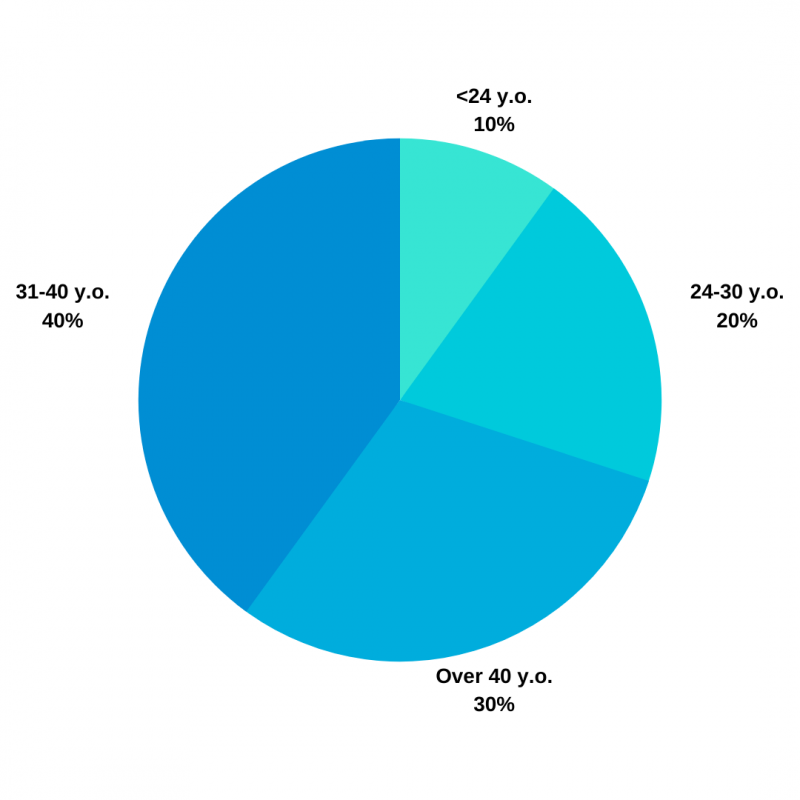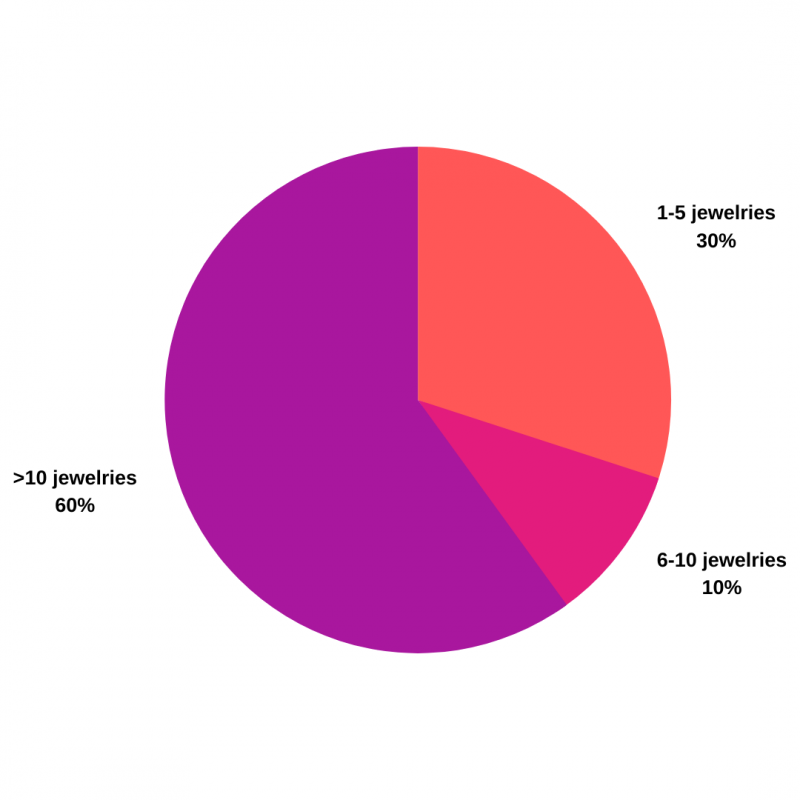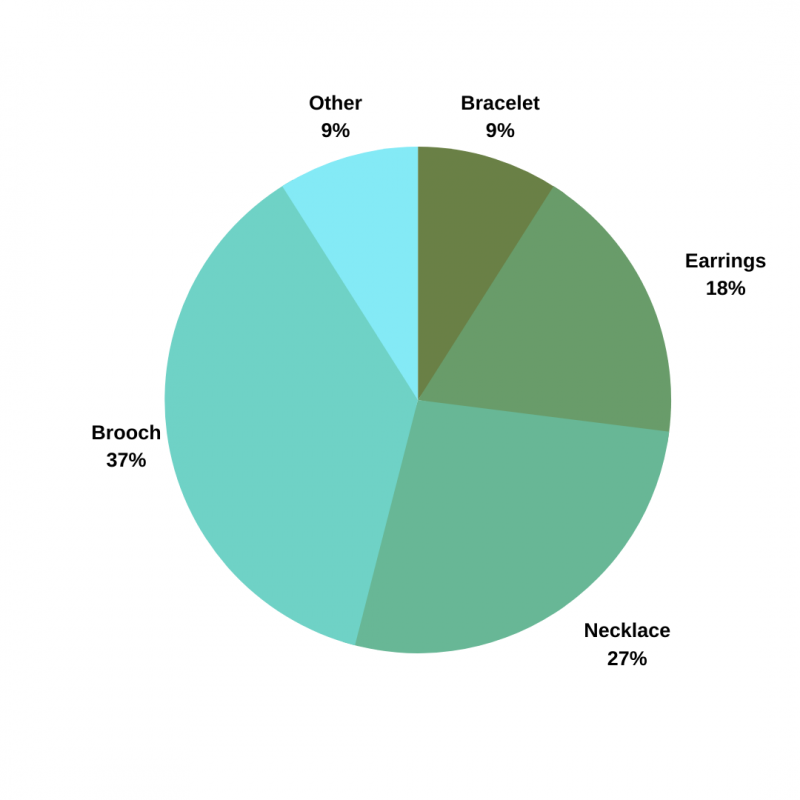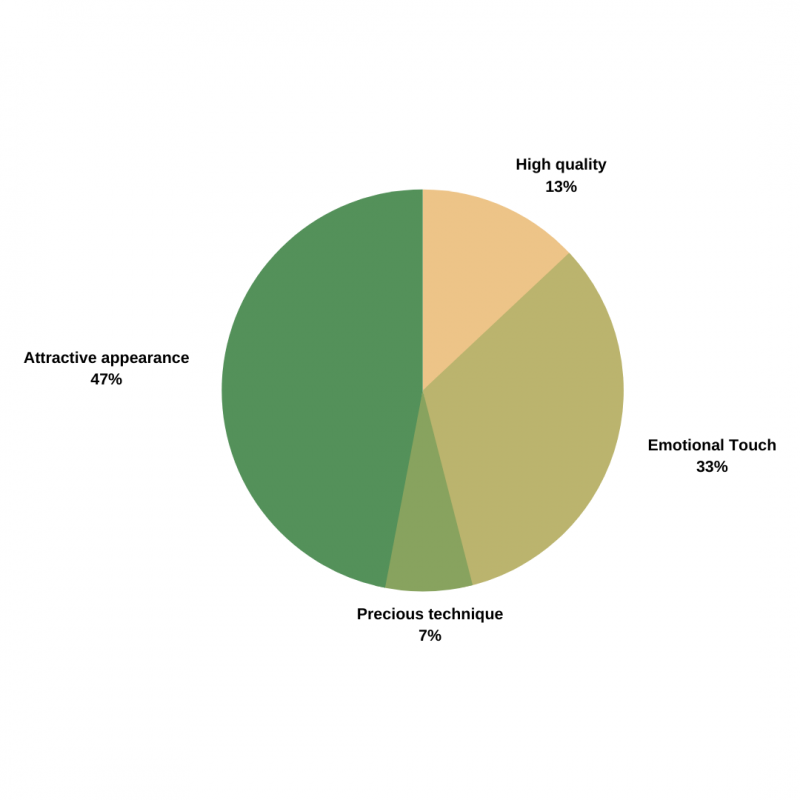Molly Wang is fascinated by in-studio-craftsmanship, her passion being low-tech metalsmithing, shaping a piece of metal step-by-step, just like making it grow. She is a jeweler who switched profession from a non-related area to study and make contemporary jewelry. Molly used to work in a high-tech company, experiencing how high-tech is improving the efficiency of labor. Her study started from a simple dilemma: whether the traditional low-tech craftsmanship, like metalsmithing, will be replaced by high-tech 3D-printing techniques, especially in the jewelry field. Molly was selected as a participant at AUTOR 2019 and this gave her access to a new and relevant audience for her study.
 In the early 20th century, designers and craftspeople presented a resistive attitude towards technology. As time went by, many designers embraced new techniques, more and more jewelry and jewelry related products in the market being produced by machines, based on the development of the industrial manufacturing technique.
In the early 20th century, designers and craftspeople presented a resistive attitude towards technology. As time went by, many designers embraced new techniques, more and more jewelry and jewelry related products in the market being produced by machines, based on the development of the industrial manufacturing technique.
But how are users thinking about handmade work? Do people prefer handmade, manufactured jewelry or high-tech jewelry? Because there are a lot of opinions and perceptions, Molly wanted to explore the user’s or the viewer’s perception of the value of low-tech handmade jewelry in different areas. By focusing on technique, she did a research that aims to answer this two following questions: Do people think this valued technique will be replaced by high-technology? How will we maintain the values that have been generally or historically attributed to handcrafted jewelry?
During the research, Molly used the survey method, as well as the interview method for gathering data. Because she is living abroad, she tried to get data from people with different cultural backgrounds. Therefore, Molly made an online questionnaire using two different platforms, for two different groups of people: one is for Asian people, who are studying or working in the UK; one is for local Chinese working people; one is an offline survey (same questionnaire), for the people present at AUTOR Fair 2019. The following article will describe results from all of the three survey groups, graphics being available only for the AUTOR group.
One of the first questions was “How many handmade jewelry pieces do they own as a buyer/user”. This helped Molly understand people’s knowledge and interests about handmade jewelry. There were four options: 0, 1-5, 6-10, >10. She also wanted to know whether users have preferences for functions and materials of the jewelry. Other questions include: technique, appearance, quality, price, emotional touch, concept and so on. In the end, taking into consideration that technology is booming, Molly asked the participants about their attitude towards the innovative & popular 3D-printing method of producing jewelry.
After sending the online survey trough social media, she collected 40 feedbacks on Survey Monkey, 36 feedbacks on Wenjuan.com and 10 feedbacks at the AUTOR Fair 2019. Following this data collection, the analysis about the three groups of people involved started. The youngest group is Survey Monkey (74% of the participants are in their 20’s), the oldest group being AUTOR (70% of the participants are over 30 y.o.). From this data, it can be seen that the participants at AUTOR have more life experience and bigger power of consumption.

86% of the Wenjuan survey participants have less than 5 pieces of handmade jewelry. 60% of the Survey Monkey participants have also less than 5 pieces. According to the graph, 60% of the AUTOR survey participants have more than 10 pieces of handmade jewelry.

Apparently, the western participants from AUTOR prefer brooches over other types of jewelry. The percentage of brooches are 9% (for the Wenjuan survey), 15% (for the Survey Monkey survey) and 37% (for the AUTOR survey) – which shows that the cultural background matters, Asian participants getting far more less brooches than the western.

For most participants, metal is the most accepted material. However, the participants on AUTOR are more open to other non-precious materials like wood, ceramic and plastic. In terms of technique, silversmithing also remains the most popular.
 The reasons behind the act of buying jewelries were different. Appearance is the top-choice on Survey Monkey, as well as at AUTOR, while emotional touch is the top-choice on Wenjuan. 42% people chose emotional touch – because most of these participants know less about jewelry, especially contemporary jewelry; the appearance only is not enough to make them pay more for a handmade piece, they need the story behind the jewelry, the story that gives them that emotional touch.
The reasons behind the act of buying jewelries were different. Appearance is the top-choice on Survey Monkey, as well as at AUTOR, while emotional touch is the top-choice on Wenjuan. 42% people chose emotional touch – because most of these participants know less about jewelry, especially contemporary jewelry; the appearance only is not enough to make them pay more for a handmade piece, they need the story behind the jewelry, the story that gives them that emotional touch.

Answering the question “Why would someone choose to buy something serial, not handmade? “, the Wenjuan & Survey Monkey groups mentioned the argument “easier to find”, while the AUTOR participants mentioned the argument “cheaper”. Because contemporary jewelry, especially art jewelry, is still new for Chinese people, it is not easy to find them in shops or galleries. However, there are several small galleries in Beijing and in Shanghai, opened in the past five years (San W, Froots, the Closer). These galleries are focusing on promoting international contemporary jewelry and crafts in China.

When asked who wants to own a 3D-printed jewelry, 58% participants on Wenjuan said no. Compared with the data from other groups, people on Wenjuan seem more conservative. On the contrary, groups with people working in art & design are more open to high-tech techniques, like the AUTOR group (70% in favor of 3D printed jewelry).
The most attractive factors of 3D-printed jewelry is the concept for the Wenjuan group and appearance for the Survey Monkey group. Technique and appearance are also important for the AUTOR group. From the results, the different opinions of outsiders and insiders show that the majority of people really needs to know the story behind the work – otherwise, the impact might be lost. Talking about the user’s attitude to the future of handmade jewelry, most participants feel positive overall. Some of the feedbacks mention that handmade jewelry is precious and irreplaceable.

Survey participants @ AUTOR 2019, photos by Molly Wang. From left to right: Paulo Ribeiro, Melanie Isverding & Romanian audience.
Conclusions
Generally, there are three main points mentioned in this research:
First, most outsiders don’t know much about contemporary handmade jewelry (which is understandable) and most of them feel positive about developing it further in the future. These results really encourage artists to stick with the traditional technique.
Secondly, precious craftsmanship can be treasured and developed better by promoting it on diverse media platforms. It’s not only about marketing strategy, but also about public education that helps build the fundamental aesthetic awareness of the younger generation.
Last but not least, only discussing technique is unpersuasive and powerless. But, how technique can help the jeweller to deliver emotion to an audience is what should be practiced all the times. As Paul Greenhalgh says in the end of The Persistence of Craft:
“We are swimming in a sea of stuff we have made. We need to continually remind ourselves why it looks like it does and why we do it. And we must be careful not to drown in it.”
A researchy conducted by Molly Wang